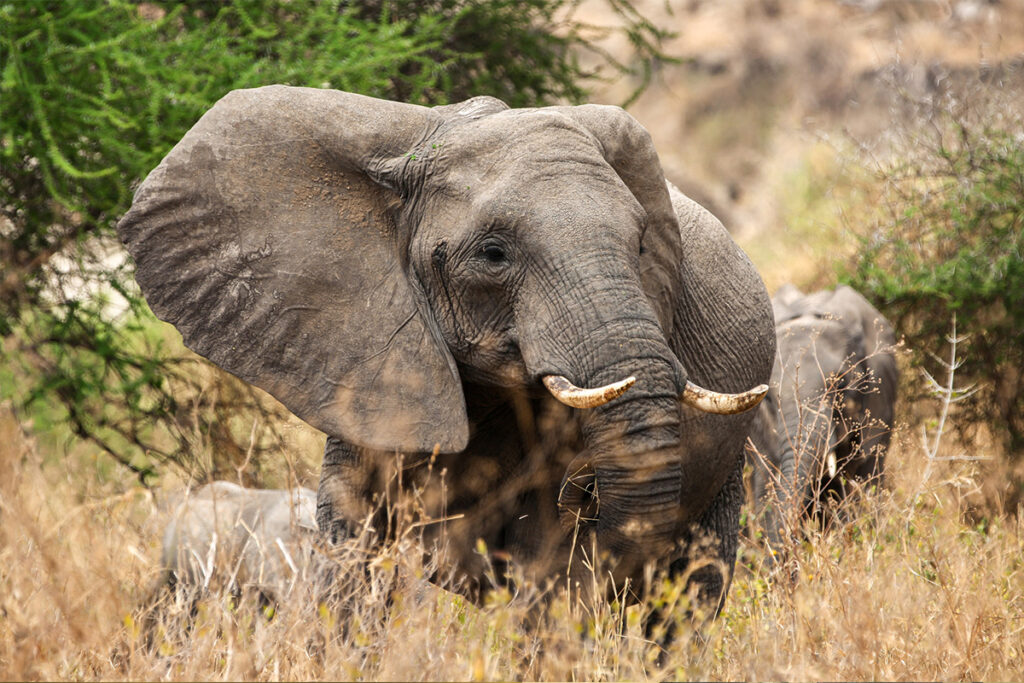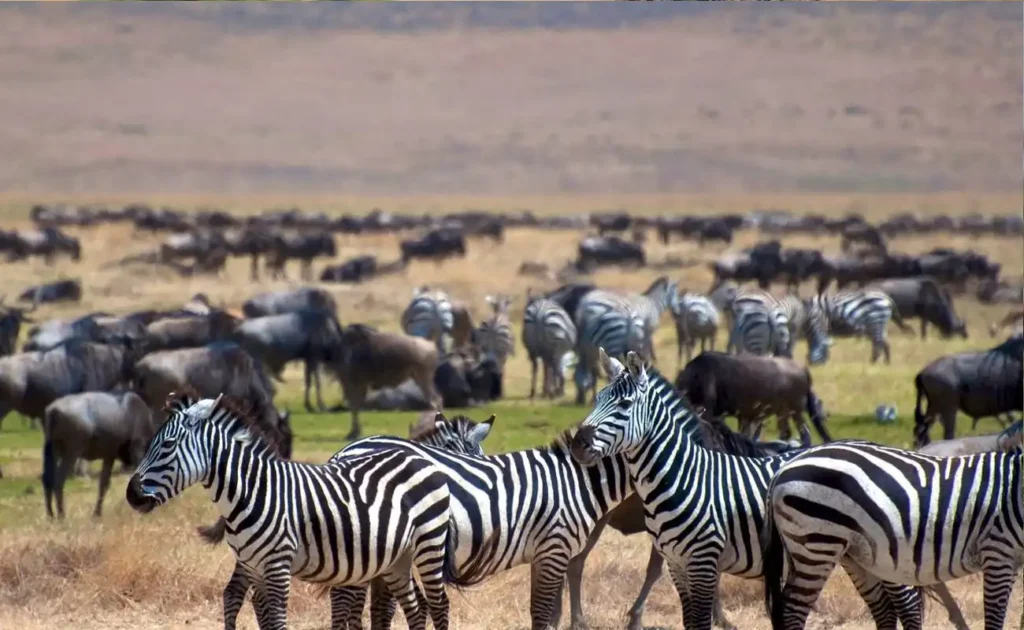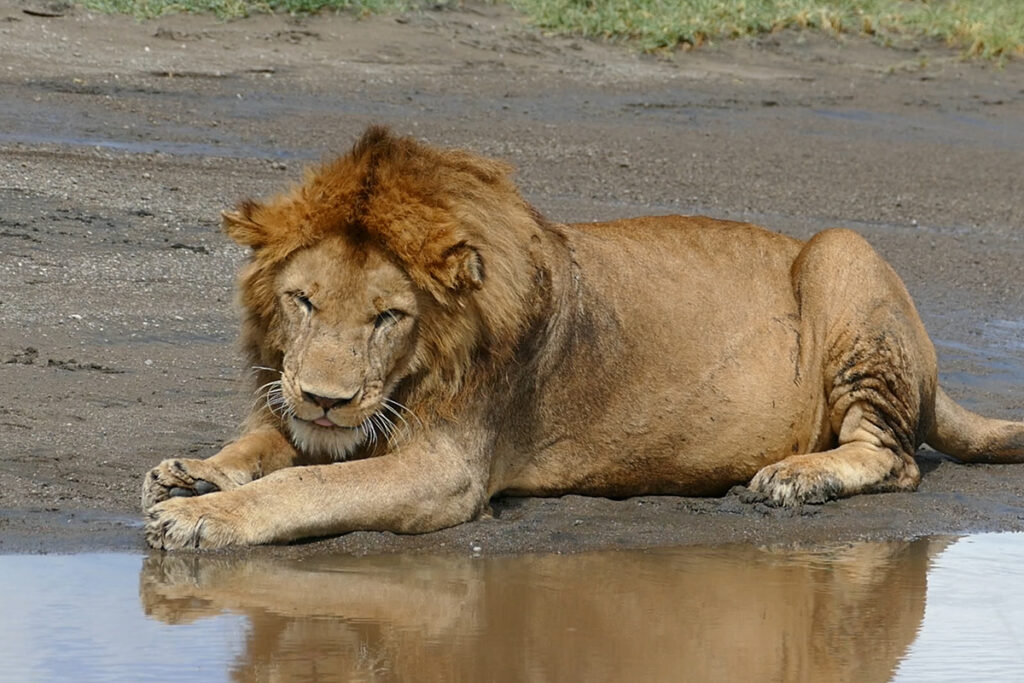Planning a trip to Tanzania in September is an excellent choice for adventurers and nature enthusiasts alike. September falls within the dry season, offering optimal conditions for both safari adventures and climbing Mount Kilimanjaro. This article will explore what you can expect when visiting Tanzania in September, highlighting the best experiences and providing tips to ensure a memorable trip.
Why September is Ideal for a Safari in Tanzania
Climate and Weather Conditions
September in Tanzania is characterized by clear skies, warm days, and cool nights. The dry season, which runs from June to October, is perfect for wildlife viewing as animals gather around water sources, making sightings easier and more frequent.
Wildlife Viewing Opportunities
During September, wildlife is highly visible and concentrated in certain areas, providing exceptional opportunities to see the Big Five (lion, leopard, elephant, buffalo, and rhino) and other iconic African animals. The dry, sunny weather ensures optimal lighting for photography and extended game drives.
Top Safari Destinations in September
Serengeti National Park
The Serengeti is world-renowned for its incredible wildlife and the Great Migration. In September, the herds of wildebeest and zebras are often seen in the northern Serengeti, preparing to cross the Mara River, which attracts numerous predators and offers thrilling viewing opportunities.
Ngorongoro Crater
The Ngorongoro Crater is a unique safari destination with its dense population of wildlife in a relatively small area. September’s dry weather enhances visibility and provides an excellent opportunity to see a variety of animals, including the rare black rhino.
Tarangire National Park
Known for its large elephant herds and majestic baobab trees, Tarangire is a gem for wildlife enthusiasts. In September, the park’s river becomes a magnet for wildlife, drawing animals from the surrounding areas and providing spectacular game viewing opportunities.
Selous Game Reserve
Selous Game Reserve, one of Africa’s largest protected areas, offers a more remote and less crowded safari experience. September’s dry conditions make the reserve’s rivers and lakes prime spots for viewing hippos, crocodiles, and a variety of bird species.
Unique Safari Experiences in September
The Great Migration
The Great Migration continues in September, with thousands of wildebeest and zebras crossing the Mara River. This dramatic event, with its attendant predators, is one of nature’s most awe-inspiring spectacles.
Balloon Safaris
A balloon safari provides a unique perspective on the Serengeti’s vast landscapes and wildlife. Floating above the plains at sunrise offers stunning views and a serene way to observe the animals below.
Night Game Drives
Night game drives are a thrilling way to see nocturnal wildlife. In September, the clear nights are perfect for spotting animals such as leopards, hyenas, and bush babies that are active after dark.
What to Pack for a Safari in September
Clothing and Gear
Pack light, breathable clothing for the daytime and warmer layers for the cooler mornings and evenings. Neutral colors are best for blending into the environment. Don’t forget a wide-brimmed hat, sunglasses, and sunscreen to protect against the sun.
Essential Accessories
Binoculars, a good camera, and a field guidebook will enhance your safari experience. Other essentials include insect repellent, a reusable water bottle, and a small backpack for day trips.
Kilimanjaro Climbing in September
Weather Conditions on Kilimanjaro
September offers dry and stable weather conditions for climbing Kilimanjaro. The temperatures are generally cooler, especially at higher altitudes, but the lack of rain makes for more comfortable and safer climbing conditions.
Best Routes for September Climbs
The Machame and Marangu routes are popular in September due to their established paths and scenic views. The Lemosho and Rongai routes are also excellent choices, offering different perspectives of the mountain and fewer crowds.
Preparing for Your Climb
Physical Preparation
Climbing Kilimanjaro requires good physical fitness. Begin your training several months in advance with a mix of cardio, strength training, and long hikes. Acclimatization is key, so consider doing shorter treks at high altitudes before your trip.
Gear and Equipment
Invest in quality gear, including sturdy hiking boots, thermal layers, a waterproof jacket, and a good sleeping bag. Trekking poles, a headlamp, and a large backpack are also essential. Make sure your gear is broken in and comfortable before the climb.
What to Expect During the Climb
Day-by-Day Breakdown
Your Kilimanjaro climb will be a multi-day journey, typically ranging from 5 to 9 days depending on the route. Each day involves several hours of hiking, with rest periods at designated camps. The final ascent to the summit usually starts at midnight to reach the peak at sunrise.
Scenery and Highlights
As you ascend, you’ll pass through diverse ecosystems, from lush rainforests to alpine deserts. The changing landscapes and breathtaking views are among the highlights of the climb. Reaching Uhuru Peak, the highest point in Africa, is a rewarding and emotional experience.
Health and Safety Considerations
Altitude Sickness Prevention
Altitude sickness is a common challenge on Kilimanjaro. To prevent it, ascend slowly, stay hydrated, and take regular breaks. Some climbers use medication like Diamox to help with acclimatization. Listen to your body and communicate any symptoms to your guide.
Safety Measures
Climbing with a reputable company that follows safety protocols is crucial. Ensure that your guides are trained in first aid and have the necessary equipment for emergencies. Always follow their advice and guidelines.
Conclusion
Visiting Tanzania in September offers a perfect blend of adventure and natural beauty. Whether you’re on a thrilling safari or conquering Mount Kilimanjaro, the experiences are unparalleled. With the right preparation and a spirit of adventure, your September trip to Tanzania will be nothing short of extraordinary.
FAQs
Is September a good time to see the Great Migration?
Yes, September is an excellent time to witness the Great Migration as the herds cross the Mara River, providing dramatic wildlife spectacles.
What is the weather like on Kilimanjaro in September?
The weather on Kilimanjaro in September is generally dry with clear skies, though temperatures can be very cold at higher altitudes, especially at night.
How crowded are the parks in September?
September is part of the peak tourist season, so popular parks like the Serengeti and Ngorongoro Crater can be busy. However, the vastness of the parks helps disperse the crowds.
What is the best safari gear to bring in September?
Pack light, breathable clothing, warm layers for evenings, a hat, sunglasses, sunscreen, insect repellent, binoculars, a camera, and a field guidebook.
Are there any special events in Tanzania in September?
September features cultural events and festivals in Tanzania, such as the Bagamoyo Arts Festival, celebrating Tanzanian arts, culture, and heritage.



